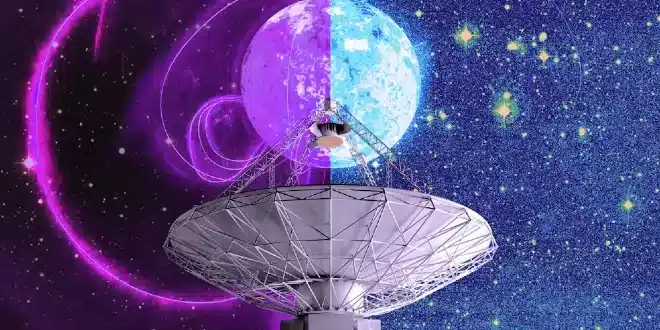Astronomers have recently detected the longest radio signal ever observed in space, possibly originating from either a neutron star or a rare type of white dwarf. This signal, with a cycle lasting nearly an hour, has left scientists puzzled.
Typically, rotating neutron stars known as pulsars are the source of most radio signals, acting like cosmic lighthouses that spin rapidly. Radio telescopes frequently capture short bursts of radio waves from far-off regions of the universe, with these “radio transients” following various patterns. Some flash briefly and disappear, while others blink regularly.
However, this newly discovered radio signal, named ASKAP J1935+2148, is unique with its nearly hour-long cycle, making it the longest cosmic signal ever recorded. Astronomers noticed that it sometimes emitted long, bright bursts and at other times, rapid, faint pulses, or no signal at all.
The findings, published in *Nature Astronomy*, suggest that the signal likely comes from an unusually slow-spinning neutron star.
The radio pulse was first detected using the CSIRO’s ASKAP radio telescope in Western Australia while monitoring gamma-ray sources and searching for fast radio bursts. Further observations were conducted over several months, including with the more sensitive MeerKAT radio telescope in South Africa.
The study identified three distinct modes of the radio signal. In the first mode, bright, linearly polarized pulses lasted 10 to 50 seconds. In the second, weaker circularly polarized pulses appeared, lasting just 370 milliseconds. The third mode showed no pulses at all.
Researchers believe that these modes are caused by complex interactions between magnetic fields and plasma flows at the source, combined with strong magnetic fields in the surrounding space. They suggest the signal most likely comes from a slow-spinning neutron star, although a white dwarf with a slow rotation period could also be responsible. However, the neutron star is considered the more likely candidate, as there are no known highly magnetic white dwarfs in the vicinity.


